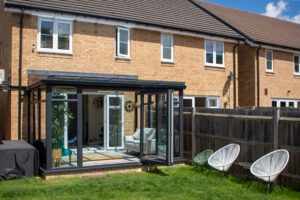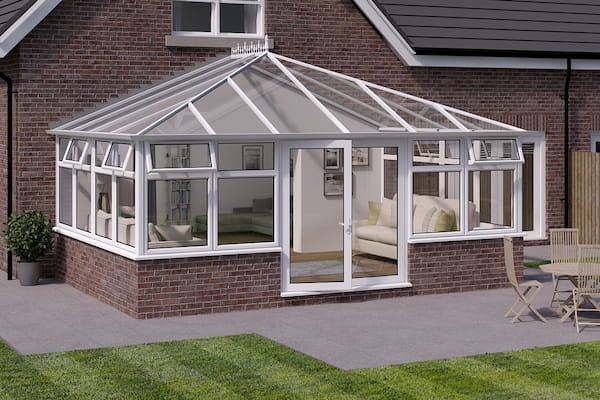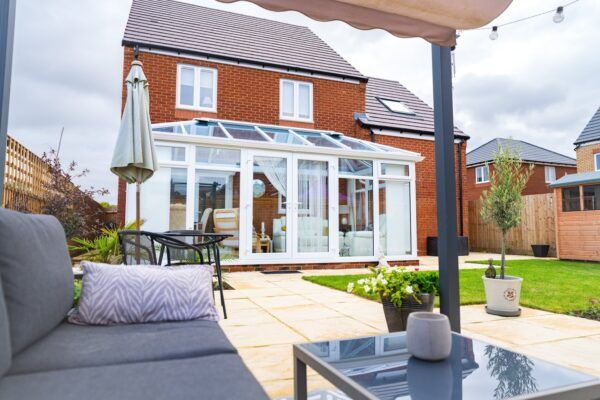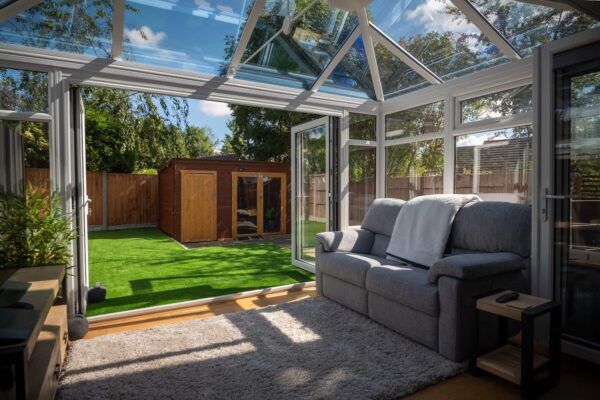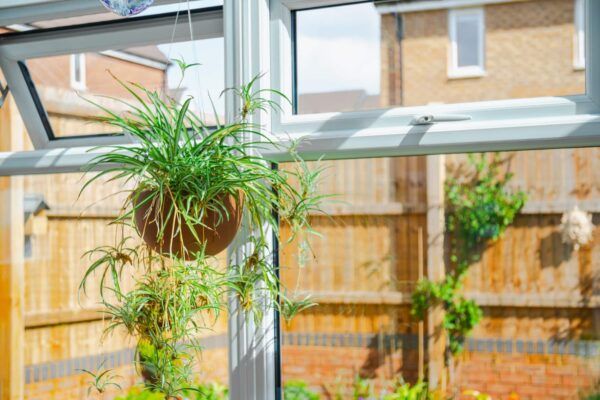If you’re looking to extend your home and introduce more natural light, a sunroom or conservatory might be on your list. Both options provide beautiful, functional spaces, but deciding which one suits your home best can sometimes feel like a challenge. That’s why it’s useful to understand the difference between a sunroom and a conservatory.
A sunroom typically features large windows and a solid roof, often tiled or slated, creating a bright, comfortable space. A conservatory, on the other hand, is a substantially glazed structure, including the roof, allowing more sunlight in and offering greater design flexibility.
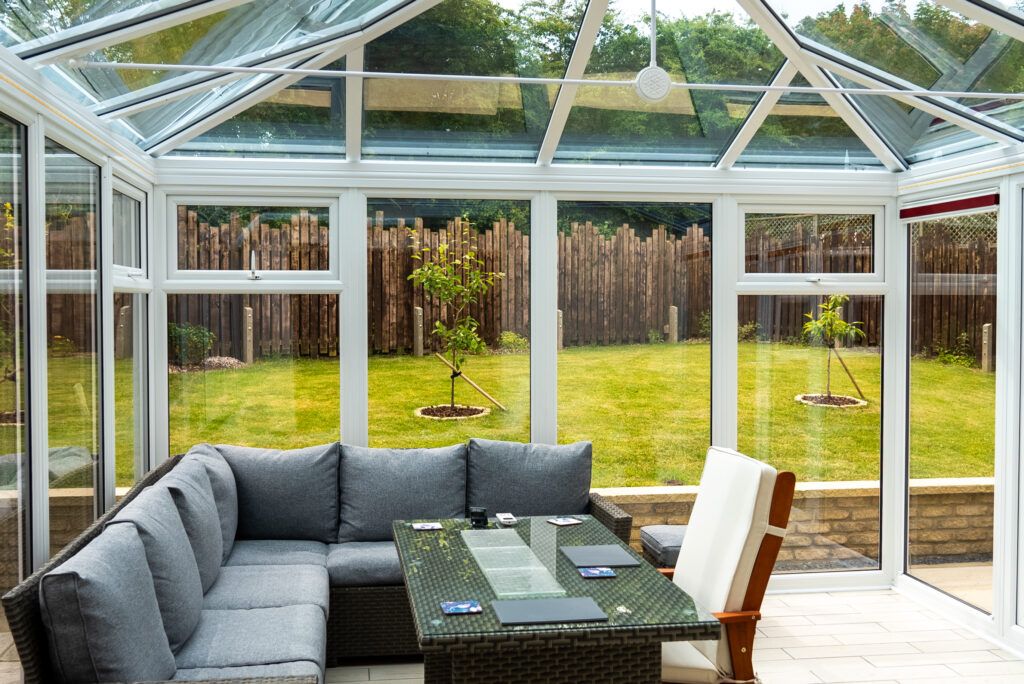
What is a conservatory?
A conservatory is a glass-enclosed space with uPVC frames, windows and a typically glass or polycarbonate roof designed to maximise sunlight. It adds extra room to your home and also creates a seamless connection between the indoors and out.
Originally designed as greenhouses to house plants, modern conservatories offer much more due to various design elements, making them perfect for dining, socialising, relaxing or even working from home, no matter the season.
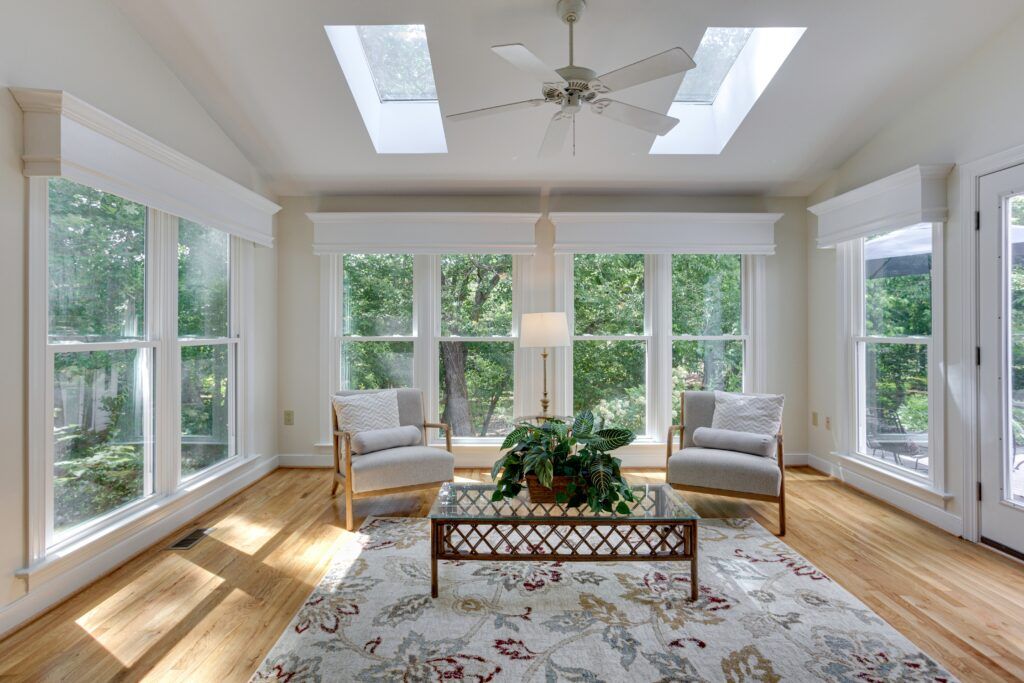
What is a sunroom?
A sunroom, also known as a solarium, features more solid wall space and typically comes with either a solid or glass roof. Its solid walls, ventilation controls and heating/cooling options allow for comfortable year-round use.
Although sunrooms generally offer fewer design options compared to the flexibility of conservatories, they remain a cost-effective way to add bright, usable space to your home.
Sunroom v Conservatory – Key differences
When deciding, it’s essential to understand that while both sunrooms and conservatories add space, they differ in materials, cost, energy efficiency, and usability.
| Sunroom | Conservatory | |
| Size | A variety of sizes, depending on your use and space. | Various styles and sizes, depending on home, space and intended use. |
| Uses | Used for relaxation, hobbies, or entertaining, sunrooms can be enjoyed all year round if the right insulation is in place. | Modern conservatories can be used year-round and often used as dining rooms, home offices or lounges. |
| Maintenance | Requires minimal maintenance, but needs to ensure windows are kept clean and grime-free. | Requires minimal maintenance, including self-cleaning glass. |
Materials
A conservatory is typically made with uPVC frames, large glass windows, a brick base, and a polycarbonate or glass roof, allowing for plenty of natural sunlight.
Adding our Blue Self-Cleaning, Solar Control Glass to your glass roof options helps maintain comfortable temperatures throughout the year.
In contrast, a sunroom features more solid brickwork walls alongside large windows, with the roof constructed from materials like tile or slate. These materials impact both the look and the insulation of the space.
Cost
Sunrooms are generally more affordable to build than conservatories, but conservatories offer greater versatility and a more luxurious feel.
Our friendly team at ConservatoryLand can assess your needs and style preferences to provide a tailored quote, or you can use our handy quote builder.
Energy efficiency
Modern conservatories feature eco-friendly materials and energy-efficient glazing, ensuring better insulation and year-round usability. Proper insulation in the walls and roof also helps regulate temperature, reducing the need for excessive heating or cooling.
Sunrooms benefit from solid roofing and insulated walls, helping them retain warmth in winter and stay cool in summer.
Regulations
You generally won’t need planning permission for a conservatory or sunroom, as they usually fall under permitted development. However, it’s always wise to check local regulations.
For more details, visit our regularly updated conservatory planning permission page.
Functionality and usage
Modern conservatories are designed for year-round use, making them adaptable for various purposes, such as a home office or gym. Sunrooms provide comfortable living spaces but may feel less integrated with the rest of your home and can reduce natural sunlight or views.
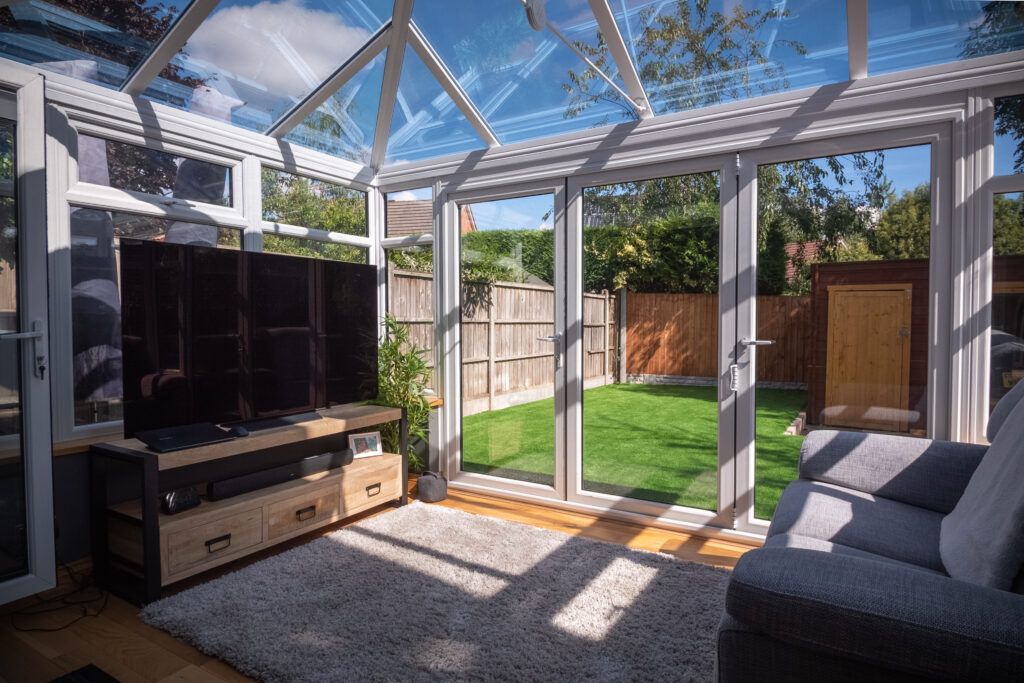
Which option is right for you? Factors to consider
When choosing between a sunroom versus a conservatory, it’s important to weigh up your specific needs and preferences. Here are some key factors to guide your decision:
Budget
If you’re working with a smaller budget, a sunroom is usually the more affordable choice. However, if you’re after a long-term investment that adds both value and style to your home, a conservatory might be worth the extra spend.
At ConservatoryLand, we offer high-quality conservatories at competitive prices. For more details, visit our conservatory prices page.
Aesthetics
Consider how each option complements your home’s architecture. Sunrooms often have a traditional look, while conservatories provide a fully glazed, elegant appearance that enhances any property.
We offer a wide range of real brick finishes to match your home perfectly, or we can supply the walls ready for rendering.
Intended Use
Consider how you’ll envision using the space. Conservatories offer year-round versatility, making them ideal for dining, entertaining or even as a home office. Sunrooms are better suited for relaxation during the warmer months.
House Value
Both options can increase your home’s value, but conservatories typically add more, especially when they are energy-efficient and designed for year-round use. A well-integrated conservatory that complements your home’s style can greatly boost its appeal to future buyers.
Build your dream conservatory
Ultimately, choosing between a sunroom and a conservatory comes down to your budget and how you intend to use the space.
At ConservatoryLand, we specialise in crafting high-quality, affordable conservatories tailored to your needs. With flexible finance options, hassle-free installation and a 10-year guarantee, we’re confident you’ll find a conservatory to be the perfect addition to your home.
Ready to get started? Use our quote builder to design your dream conservatory today!
